
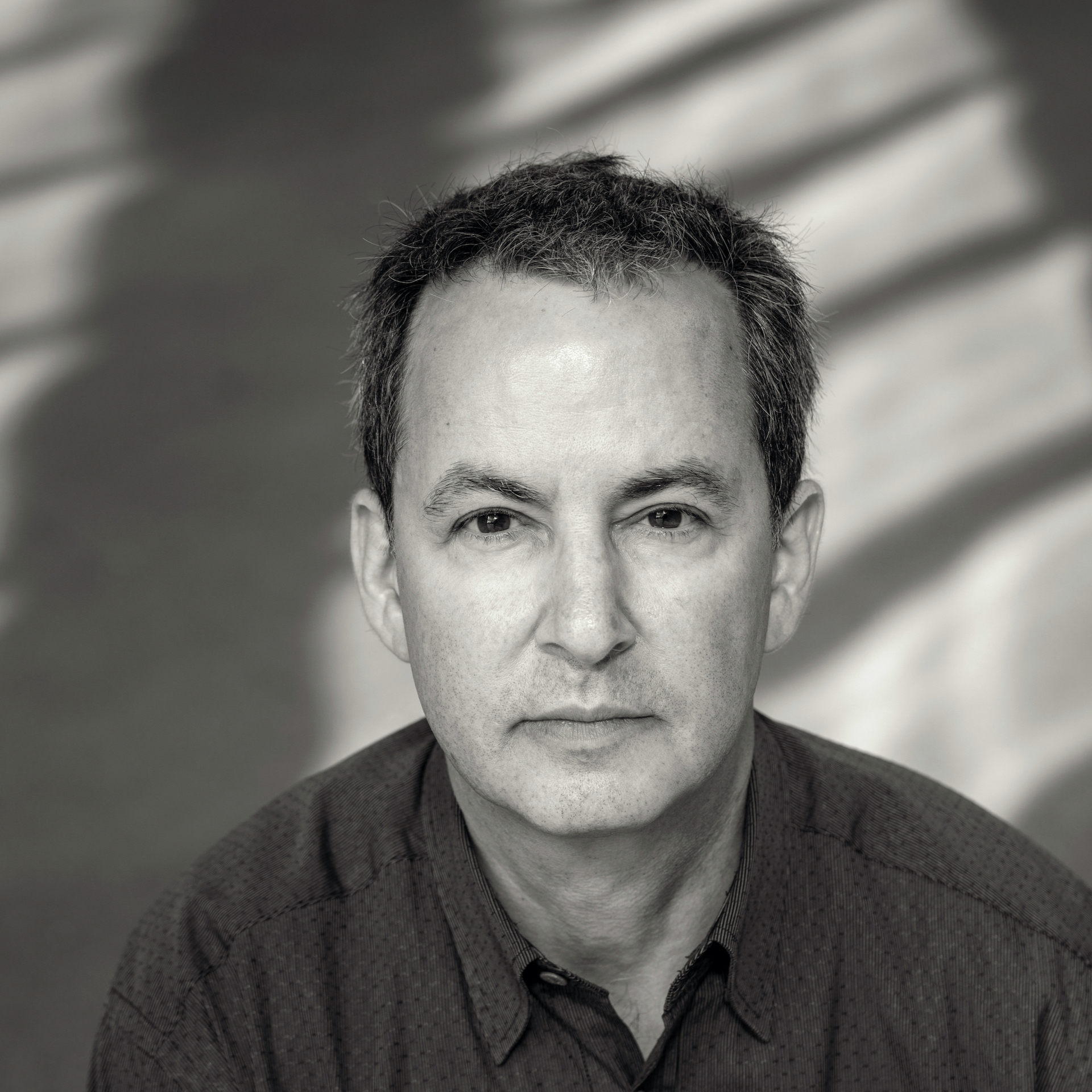
William Susman
Clouds and Flames
Duration: 15'
Instrumentation details:
piano
violin
violoncello
Clouds and Flames
Translation, reprints and more
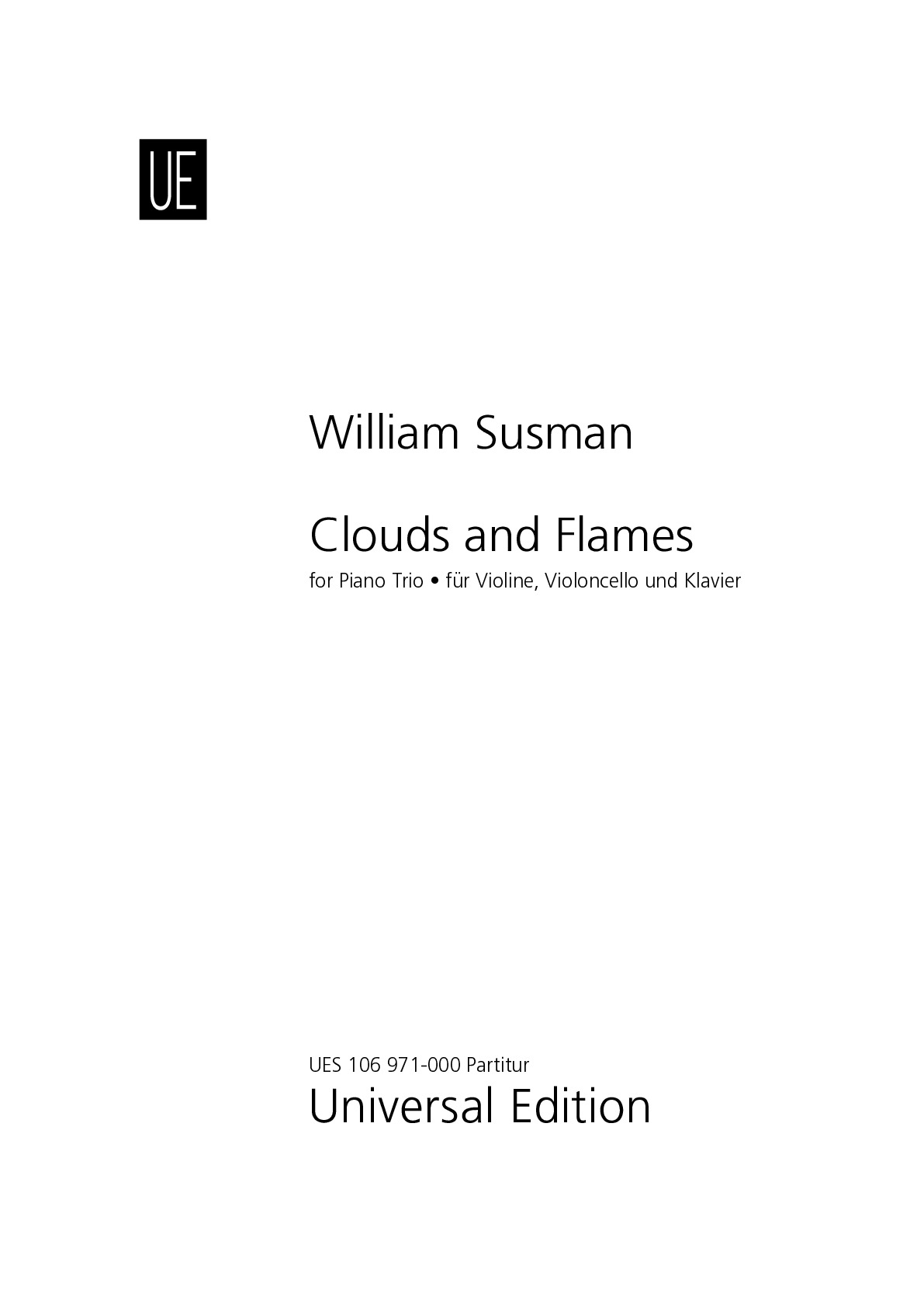
William Susman
Clouds and FlamesOrchestration: for Piano Trio
Type: Dirigierpartitur
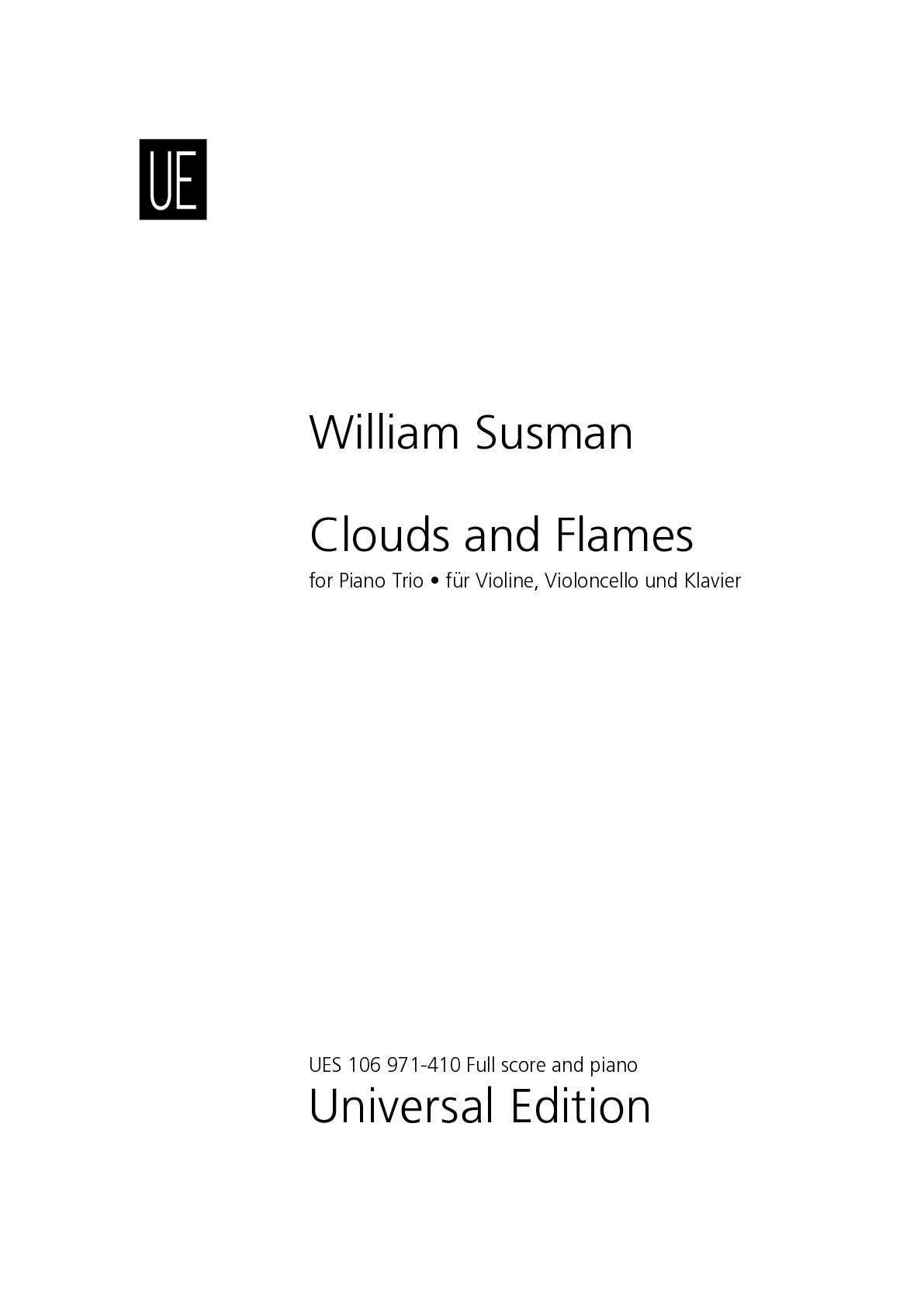
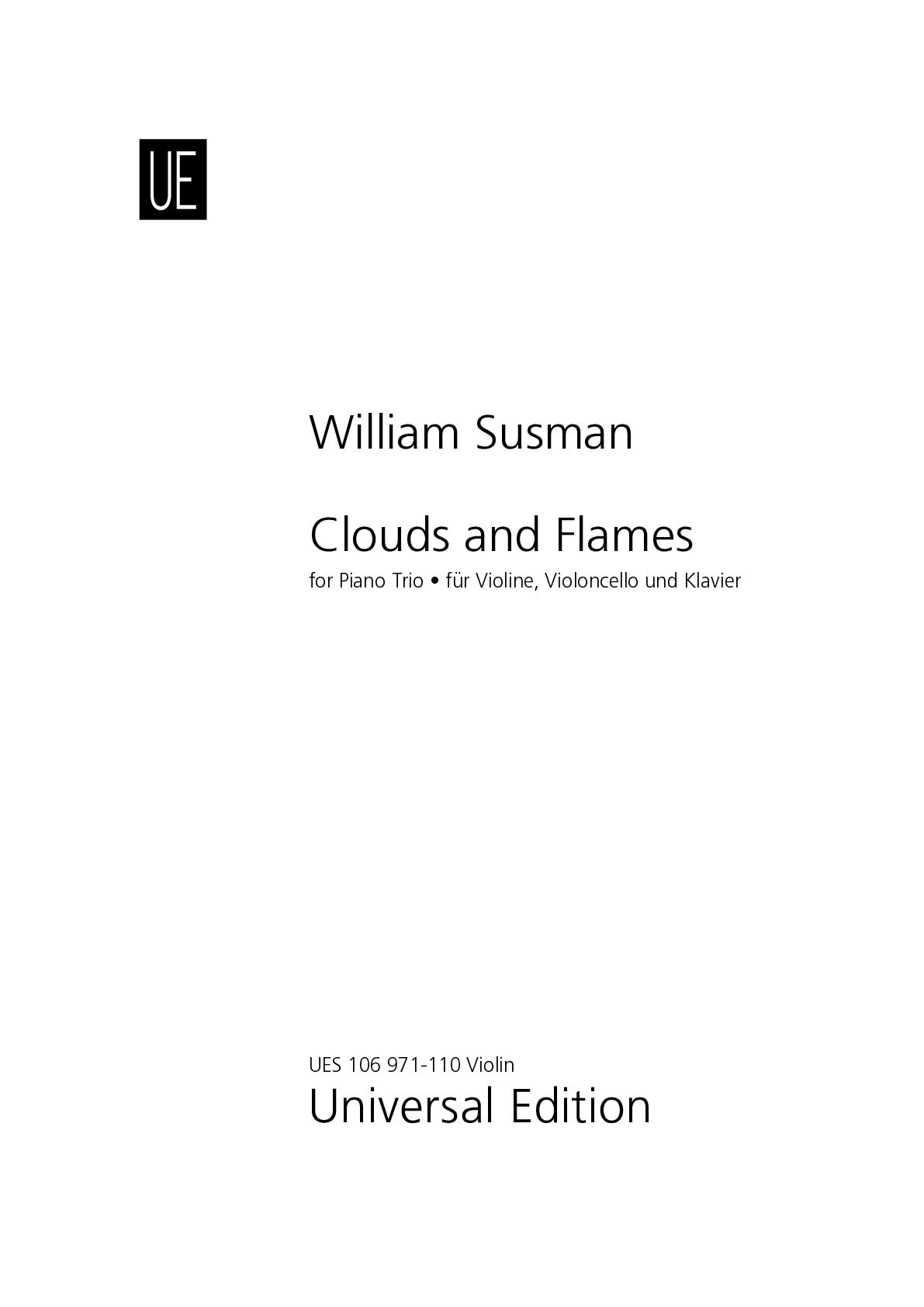
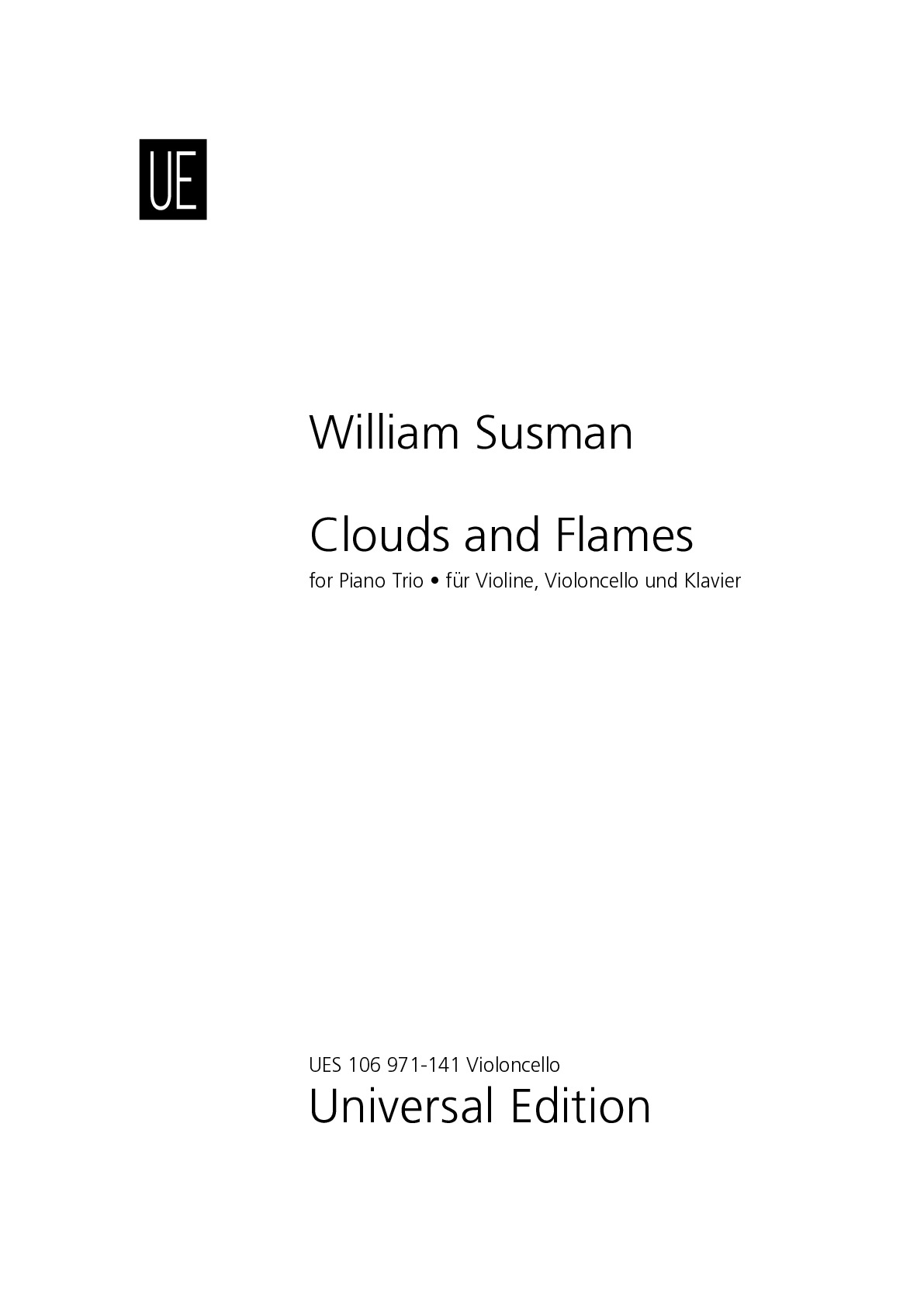
Sample pages
Audio preview
Video
Work introduction
Clouds and Flames was commissioned by the Rome-based ensemble Piccola Accademia degli Specchi.
The title Clouds and Flames and the names of the movements come from lyrical moments in Colum McCann’s novel Let the Great World Spin.
The movements, inspired by events in the novel, are a set of impressions on loss, remembrance and rebirth, and, a meditation on the tightrope wire walk of Philippe Petit between the World Trade Center towers on August 7, 1974 culminating in events surrounding 9/11.
Life must pass through difficulty to achieve any modicum of beauty.
– Colum McCann
Clouds and Flames contains seven movements:
I. Riding Towards Oblivion
II. Floating in the Air
III. In a Zone
IV. The Alphabet of Dying
V. Collision Point
VI. Jar of Ashes
VII. The World Spins
From the liner notes to the album Collision Point:
...Or of the tightrope walking – here we come back to it. Because the heart of the program is certainly Clouds and Flames, a piano trio composed in 2010, one of whose movements gives its Collision Point name to the album. The title of this trio, like that of its seven constituting movements, derives from the novel Let the Great World Spin, published in 2009 by Irish writer Colum McCann (and awarded the National Book Award the same year). Inspired by certain episodes of the novel, these movements, writes William Susman, “are a set of impressions on loss and rebirth, and a meditation on the tightrope wire walk of Philippe Petit between the World Trade Center towers on August 7, 1974.” An episode that is precisely the starting point and one of the leitmotifs of McCann’s book. “The tightrope walker looks like the novelist: he weaves the wires on which he must balance himself”, McCann confided in an interview. This could apply also to William Susman, acrobat-architect.
“When you think you have a clear idea of a composer’s purpose, suddenly you realize that something is hiding behind it, and behind it, again and again, and so on. I will keep playing William’s music for a long time, as it piques my curiosity and I have so much to learn from him!” declared composer and pianist Francesco Di Fiore in 2012. Susman’s chamber music is a labyrinth of rhythms, a perpetually moving trompe-l’œil that seems to echo the verse of Tennyson that inspired the title of McCann’s novel: “Let the great world spin forever down the ringing grooves of change...”
David Sanson
Bordeaux, March 2019 (translation: Matteo Sommacal)
